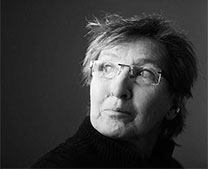


CPH:DOX /Joshua Oppenheimer
THE LOOK OF SILENCE by Joshua Oppenheimer
It’s horrifying, it hurts to watch the scenes that shows these brutal perpetrators re-enact their killings committed around 1965 in Indonesia, where the slaughtering of communists were performed by a military regime and its gangs that had come into power. One million were killed. The Americans (and the rest of the world?, at least we did not hear about it, or did we?) made no objections as an American NBC news clip shows in this second Descent to Hell, Indonesia 1965 and today, the first being ”The Act of Killing”. This time seen from the point of view of an opthalmologist, Adi, a man in his forties with wife and two children, a mother and a father – and a brother, Ramli, who was killed back then.
The overall theme of the film is the same, yet ”The Look of Silence” is completely different from ”The Act of Killing”, that framed the story of the perpetrators horror by having them make their film about the act of killing. Surrealistic scenes came out of that, to say the least. Whereas ”The Look of Silence” brings Adi to the centre to make him meet old men in the neighbourhood, men who took part in the atrocities. He comes to check their sight and starts to ask about the past. He gets to know more and more and ends up discovering the involvement of his own family – an uncle was a guard in the prison that Ramli was taken to before he was – that is the word
being used – hacked into pieces! Adi gets to know all the details about how his brother was murdered.
The slow rythm is different to ”The Act of Killing”. You are taken to a place, where the cikades are singing, a soothing sound to beautiful images (cameraman Lars Skree) surrounds the horrors that Adi quietly watches on a tv set, filmed by Joshua Oppenheimer a decade before. In this material the killers enthusiastically demonstrate how they dragged the victims to the Snake River to throw them into the water after their deed. In a unique scene Adi walks with Kemat to the Snake River, no words from their mouths but a touching voice-off text from the survivor.
Adi keeps a straight face until he meets an old killer and his daughter. The old man talks about drinking the blood of the victims, ”so you don’t get crazy”, another says the blood is ”sweet and salty”, he is senile, says the daughter, please forgive him, she has never heard about his past before, she is shocked and touched, they hug each other before Adi leaves.
Adi as a film character is gold. You are with him from the very beginning, you watch the warm scenes with his old mother – ”you are the answer to my prayers” – he was born two years after Ramli was killed – you see his lively children and his wife, who is more than worried that he has taken upon him the role of finding out what happened in 1965. It can not have been an easy decision for him to agree to take part in a film about killers, who are still alive in a country where they are considered heroes – and where the school kids, including Adi’s son, are taught that what happened was fair and right!
Any objections? No, ”The Act of Killing” and ”The Look of Silence” will stay as monumental works in the history of documentary films both in terms of the content information that is brought to us and in the cinematic way that this is conveyed. The mere fact that Oppenheimer and his many anonymous helpers have been able to make these two films deserves deep respect.
An additional remark re: ”The Look of Silence” – Oppenheimer and his editor Niels Pagh Andersen have now reached a kind of perfection in storytelling… Step by step information is given, the family is introduced and included, no stone is left unturned, the perpetrators and their families, step by step Adi knows more, step by step he gets closer to the cruel facts about his brother, the atmosphere becomes more and more intense, emotional impact on Adi and the viewer is growing, and we know that he has to show his despair explicitly… Can a film be too perfect?
Denmark, Indonesia, Norway, Finland & UK, 2014, 98 mins.
The film is shown at cph:dox in Copenhagen.
http://cphdox.dk